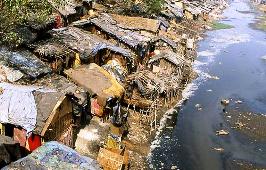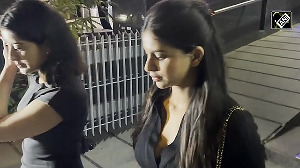 Living in slums might mean filthy surroundings and poor amenities such as sanitation.
Living in slums might mean filthy surroundings and poor amenities such as sanitation.
But it doesn’t mean these dwellers are deprived of bank accounts, televisions, mobiles, internet access, two-wheelers and, in some cases, even cars.
The first census of slum households, released by the Census of India today, shows the difference in poverty levels of those living in slums and others isn’t much. In the case of some amenities and assets, those staying in slums seem to be better off, the survey shows.
Assets
While 6.2 per cent of the non-slum urban population didn’t have bank accounts, televisions, mobiles, internet access, two-wheelers and cars, 10.7 per cent of those living in slums didn’t have these assets.
A total of 20.4 per cent of non-slum households had computers and laptops, while in slums, half that number owned these.
Just 9.3 per cent of non-slum households had access to internet; for slum households, it was 3.3 per cent.
In Kerala, the percentage was the same for slum and non-slum households.
Mobile phones were a leveler—possession by non-slum households stood at 64.5 per cent, while 63.5per
While 11.1 per cent of non-slum households had either a car or a van or a jeep, 3.6 per cent of slum-households owned these. Of the non-slum households, 78 per cent owned TVs; 70 pc of slum households had TVs.
A total of 70.8 pc of non-slum households had bank accounts.
In the case of slum households, it was 53.2 per cent.
Amenities
In the case of households with open or no drainage, while 53.9 per cent of non-slum households lived beside open drains, 63.1 per cent of slum households were located close to such drains.
Compared to 70 per cent of non-slum households getting drinking water from taps, 74 per cent of slum dwellers drank tap water.
While 27.7 per cent of non-slum households had toilets outside the house, for slum households, it was 43.3 per cent.
Electricity and LPG
While 93.1 per cent non-slum households had electricity, 90.5 per cent of slum households had access to it.
As for liquefied petroleum gas, 51.3 per cent of slum households had access to it, while for non-slum households, it was 67.9 per cent.










 © 2025
© 2025